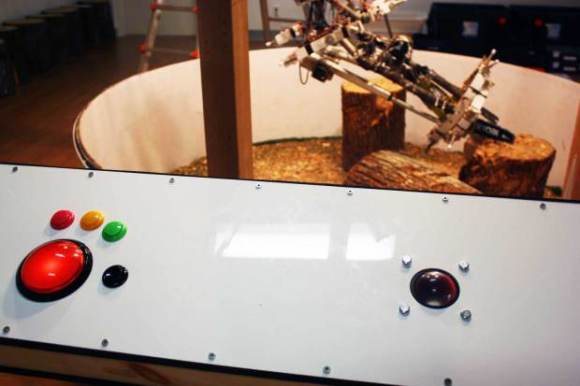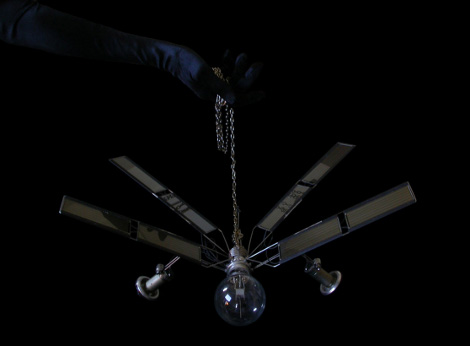
[Morgan Rauscher] is a rather eccentric artist, inventor, maker, professor… jack of all trades. His latest project is called the Art-Bot – and it’s an 8′ robotic arm equipped with a chainsaw. Did we mention you can control it via arcade buttons?
He’s been building sculptures for over 10 years now, and has enjoyed observing the evolution of automated manufacturing – from CNC machines to laser cutters and even now, 3D printers. He loves the technologies, but fears machines are making it too easy – distancing us from the good old physical interaction it once took to make things with a few simple tools. His Art-Bot project attempts to bridge that gap by bringing tactile transference to the experience.
The cool part about the Art-Bot is that it is mostly made of recycled materials – in particular, bicycle parts!
Making a robot from bicycle parts is really not that difficult, and I highly recommend it.
The rest of the robot consists of electric actuators (linear), the control circuitry, and of course — a chainsaw. For safety’s sake, [Morgan] also built a polycarbonate wall around it to protect users from it going on a murderous rampage wood chips and other debris thrown from the robot.
Continue reading “What Could Possibly Go Wrong Giving A Robot A Chainsaw?”




















